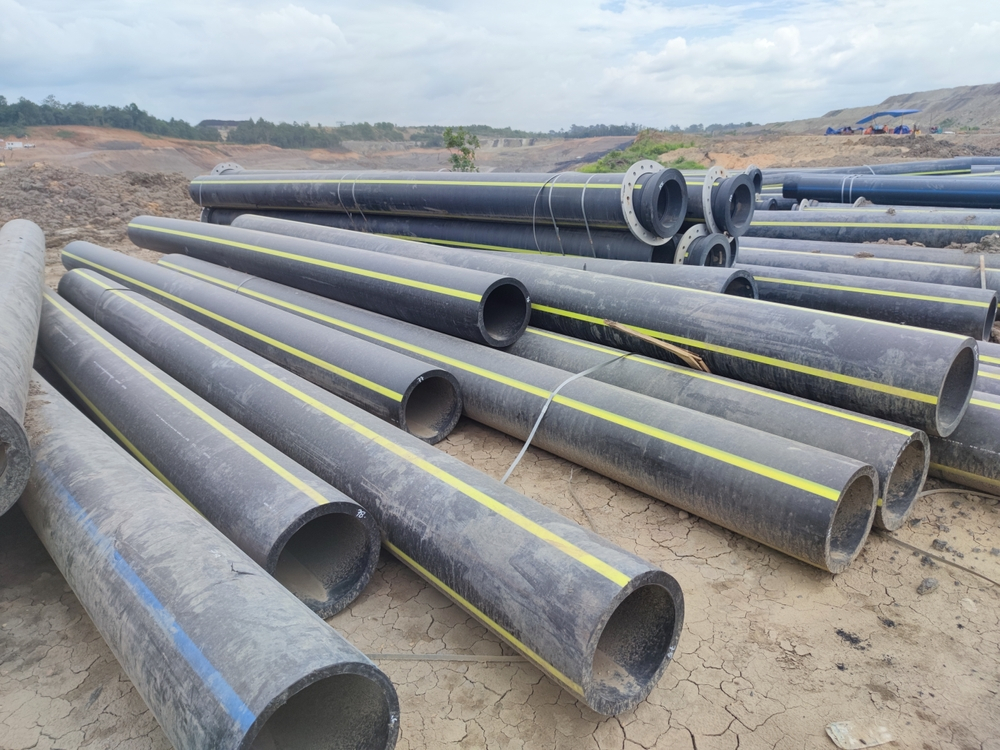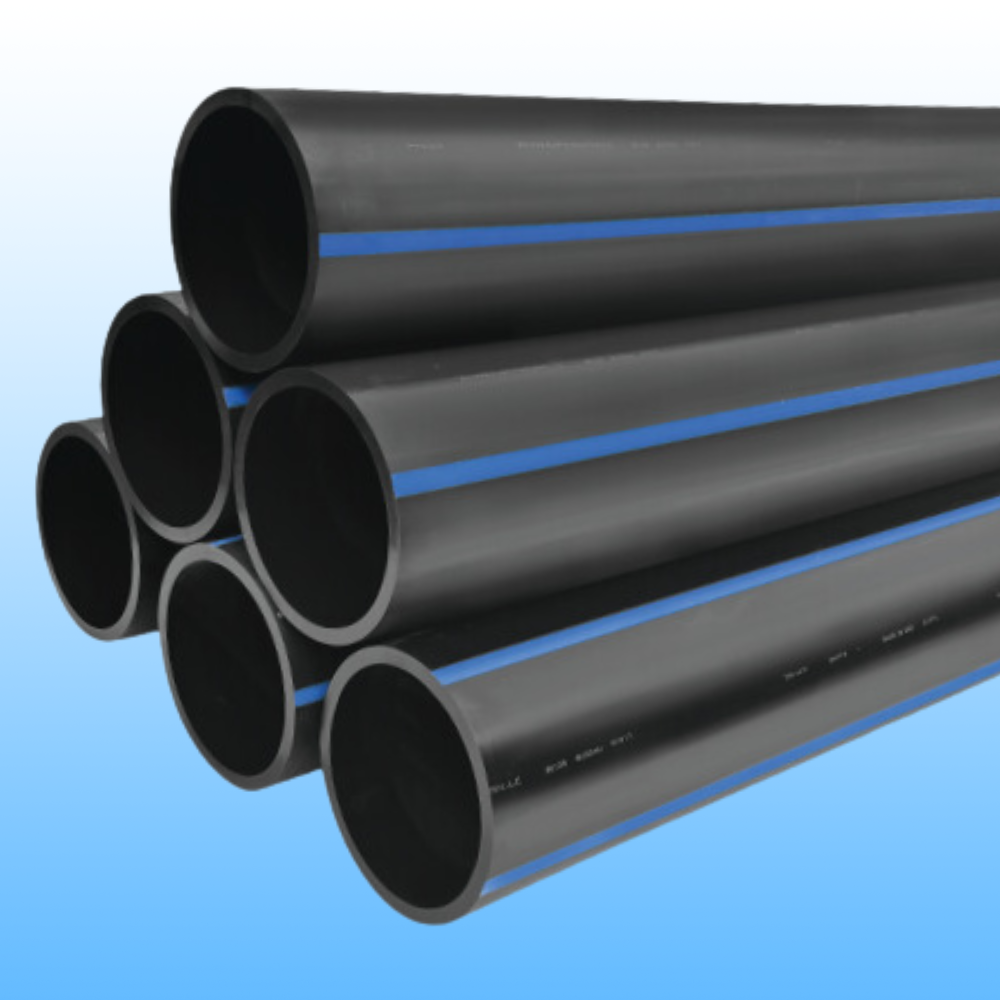Proven Reasons to Choose hdpe pipe suppliers Midland TX for Reliable Sourcing
The Vital Steps for Successful Installation of HDPE Pipeline in Your Next Job
Effective installment of HDPE pipeline needs mindful planning and execution. Key actions include evaluating job needs, preparing the site, and choosing proper joining strategies. Each stage plays a critical function in making sure the integrity and performance of the pipeline. Understanding these necessary actions can considerably influence the overall success of the task - hdpe pipe suppliers Midland TX. The nuances of each step might hold the secret to overcoming usual challenges faced during installment.
Understanding the Conveniences of HDPE Pipeline
High-density polyethylene (HDPE) pipeline provides countless benefits that make it a favored selection for numerous applications. Its high resistance to rust and chemicals guarantees toughness popular settings, substantially expanding the life expectancy of installations. In addition, HDPE's flexibility permits less complicated setup, specifically in tough terrains, as it can flex without breaking. The lightweight nature of HDPE pipeline streamlines transport and handling, decreasing labor costs during installation.
HDPE pipe is understood for its reduced friction coefficient, which enhances fluid flow and minimizes power consumption. Its smooth construction reduces the risk of leaks, adding to far better source monitoring and environmental management. In addition, HDPE is recyclable, lining up with lasting methods and decreasing environmental effect. On the whole, the combination of toughness, versatility, and eco-friendliness makes HDPE pipeline a remarkable choice for a vast array of jobs, from water distribution to industrial applications.
Planning Your HDPE Pipeline Installment
When planning a setup of HDPE pipeline, mindful consideration of numerous key aspects is essential to safeguard a successful task. Initially, project managers need to analyze the details needs of the pipe, consisting of the intended usage, circulation prices, and ecological conditions. Understanding these specifications will guide the selection of appropriate pipeline dimensions and product grade.
Next off, timelines must be developed, factoring in procurement routines and any type of potential hold-ups. Coordination with neighborhood authorities for licenses and regulative conformity is additionally important. In addition, a thorough budget must be prepared, incorporating all costs linked with materials, labor, and equipment.
Last but not least, it is essential to engage a certified team experienced in HDPE pipe setup. Their experience will certainly help mitigate dangers, warranty adherence to industry requirements, and ultimately add to the job's success. Complete planning lays the foundation for a smooth installation process and long-lasting efficiency of the HDPE piping system.
Preparing the Site for Installment
Appropriate website preparation is essential for the effective setup of HDPE pipeline. Before installment starts, the site needs to be extensively evaluated to guarantee it fulfills all required demands. This consists of evaluating the ground for existing frameworks, utilities, and potential dangers that can hinder the installment process.

Proper altitude and alignment should be established to keep a regular gradient for drain functions. Correct drain around the setup website is likewise critical to avoid water build-up, which can lead to problems down the line.
Techniques for Signing Up With HDPE Pipelines
Attaining a trusted connection between HDPE pipes is essential for ensuring the integrity and durability of the installment. Numerous methods exist for signing up with these pipes, each fit for various task requirements. Combination welding is just one of the most typical techniques, using heat to bond the pipe ends together, developing a seamless and durable link. This technique can be more classified right into socket combination and butt combination, depending upon the pipeline arrangements.
Mechanical installations are another option, employing clamps and threaded adapters to join sections of HDPE pipeline. While typically faster to mount, they might need added maintenance with time. Electrofusion is a specialized technique that includes utilizing electrical existing to warmth and fuse the pipes via particularly designed installations, ensuring a solid bond. Selecting the appropriate signing up with method is important, as it directly affects the general efficiency and reliability of the HDPE piping system in the designated application.
Testing and Examination of Installed Piping
The screening and examination of set up HDPE pipes are important to ensuring their functionality and durability. This procedure includes aesthetic inspection techniques, pressure testing approaches, and leakage detection procedures to identify prospective problems. By utilizing these approaches, experts can verify the integrity of the installation before it is placed into use.
Aesthetic Examination Techniques
Using efficient aesthetic evaluation strategies is essential for guaranteeing the integrity of installed HDPE pipelines. Assessors must systematically take a look at all noticeable areas of the pipeline to recognize any indications of damage, misalignment, or improper installation. Key indicators to analyze include joint integrity, surface area abnormalities, and connections. Inspectors may make use of devices such as magnifying glasses or video cameras to enhance exposure and information. It is necessary to inspect for signs of environmental stress, such as buckling or extreme flexing, which could compromise efficiency. Regular documents of findings enables tracking modifications in time and assists guide needed fixings. By sticking to established visual examination methods, project groups can notably minimize the threat of future failures and assure long-lasting reliability of the piping system.
Stress Evaluating Methods
Visual assessment works as an initial step, yet it is not sufficient by itself to guarantee the efficiency of set up HDPE pipes. Pressure screening techniques are essential for ensuring the stability of these systems. Usually, hydrostatic testing is utilized, where the pipelines are full of water and subjected to stress degrees over the intended operating pressure. This method assists determine weak points or potential leaks. Pneumatic screening can additionally be used, although it brings greater dangers because of the compressibility of air. Despite the technique picked, sticking to industry requirements and safety and security procedures is important. After performing stress tests, thorough documentation is necessary to validate the results and validate that the setup satisfies all functional needs before proceeding to the next phase of the task.

Leak Detection Procedures
Exactly how can one ensure that mounted HDPE pipelines are devoid of leaks? Reliable leakage discovery procedures are crucial check here to secure the honesty of the system. Aesthetic inspections should be executed, looking for indicators of water build-up or dirt disintegration around pipe joints. Following this, pressure screening can validate the system's toughness. A common approach is the hydrostatic test, where water is presented under stress, monitoring for decreases that indicate possible leaks. Additionally, progressed modern technologies, such as acoustic sensing units or infrared thermography, can discover leakages that might not show up. Regular surveillance and upkeep more add to the long life of HDPE pipelines, ensuring they continue to be leak-free throughout their functional life expectancy. Proper documents of these procedures is crucial for conformity and future referral.
Upkeep Tips for Long-Term Performance
To ensure the longevity of HDPE pipelines, developing a routine inspection routine is vital. This proactive method enables the very early discovery of possible issues, lessening expensive repairs. In addition, applying appropriate cleaning methods will assist preserve peak efficiency and stop buildup that can affect functionality.
Regular Assessment Schedule
HDPE pipelines are known for their toughness and resistance to deterioration, developing a normal assessment schedule is necessary for ensuring their lasting performance. Regular inspections help identify potential problems such as leakages, joint integrity, and ecological influences that may impact the pipe's performance. It is advised that assessments take place a minimum of biannually, or much more often in settings with extreme problems. American Plastics HDPE Pipe for Oilfield. During these assessments, visual checks ought to be conducted to detect indicators of wear or damages. Furthermore, utilizing modern technology such as ultrasonic testing can give additional insights into the pipeline's condition. By executing an organized inspection schedule, task managers can proactively attend to troubles, consequently expanding the lifespan of HDPE pipes and preserving system effectiveness
Proper Cleaning Techniques
Correct cleansing methods play a crucial role in preserving the lasting performance of HDPE pipes. Routine cleansing avoids the accumulation of particles, debris, and biofilm, which can lead to obstructions and lowered circulation performance. Operators should utilize techniques such as high-pressure water jetting or foam cleansing to effectively eliminate impurities without damaging the pipe surface. It is crucial to stay clear of making use of extreme chemicals that may weaken HDPE material. Furthermore, arranged upkeep checks must consist of aesthetic inspections for any signs of wear or damage. Correctly educated personnel must execute these cleansing procedures, guaranteeing compliance with safety and environmental regulations. By implementing these practices, the life-span of HDPE pipelines can be greatly expanded, making certain optimal performance throughout their operational life.
Regularly Asked Questions
What Are the Environmental Impacts of HDPE Pipe Production?
The ecological impacts of HDPE pipe manufacturing include greenhouse gas discharges, energy intake throughout manufacturing, potential plastic air pollution, and obstacles in reusing. HDPE's long life and resistance to rust can mitigate some environmental problems.
Exactly How Does HDPE Pipeline Contrast to Various Other Materials?

What Equipment Are Needed for HDPE Pipeline Installation?
Crucial tools for HDPE pipeline installation consist of a combination equipment, pipeline cutters, shovels, measuring tape, and safety and security gear. Appropriate tools guarantees efficient, safe handling and installation, adding to the job's general success and honesty.
Exist Any Kind Of Certain Rules for HDPE Pipeline Installment?
Details laws for HDPE pipeline installment differ by area, frequently regulated by regional, state, or federal codes. Compliance with these regulations guarantees security, ecological defense, and capability, making adherence essential for effective project outcomes.
Can HDPE Pipes Be Recycled After Use?
Yes, HDPE pipes can be recycled after usage. Their polycarbonate nature permits reprocessing, making them suitable for recycling into brand-new products. This sustainability facet adds to ecological conservation and advertises round economic situation methods in building.